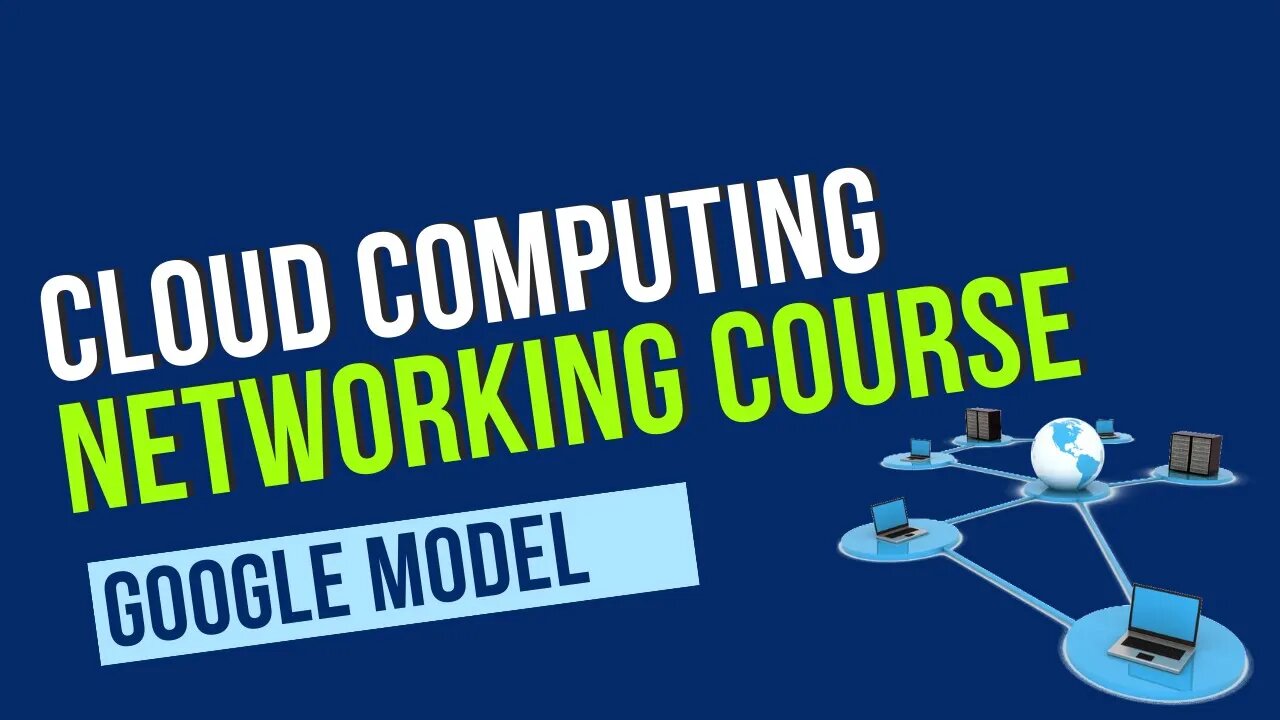Premium Only Content

What is Cloud Computing Part 73
What is Cloud Computing
Cloud computing refers to the delivery of computing resources, such as servers, storage, databases, networking, software, and other services, over the internet. Rather than storing and accessing data or running applications on local computers or physical servers, cloud computing enables users to access these resources remotely via the internet.
Here are some key aspects of cloud computing:
On-Demand Resource Provisioning: Cloud computing allows users to quickly and easily access computing resources as needed, without having to invest in and maintain their own infrastructure. Resources can be provisioned and scaled up or down based on demand.
Broad Network Access: Cloud services are accessible over the internet from a variety of devices, including computers, laptops, smartphones, and tablets. Users can access their applications and data from anywhere with an internet connection.
Resource Pooling: Cloud providers aggregate computing resources from multiple physical servers and allocate them dynamically to meet customer demands. This pooling of resources allows for efficient utilization and optimization of infrastructure.
Rapid Elasticity: Cloud services can scale resources up or down rapidly in response to changing demands. This elasticity enables businesses to handle spikes in traffic, scale their applications, and adjust resource allocation as needed without disruptions.
Pay-as-You-Go Pricing Model: Cloud services are typically offered on a pay-as-you-go basis, where users pay for the specific resources and services they consume. This model allows for cost savings by eliminating the need for upfront investments in hardware or software licenses and paying only for what is used.
Service Models: Cloud computing offers different service models to meet varying needs:
Infrastructure as a Service (IaaS): Provides virtualized computing resources, such as virtual machines, storage, and networks.
Platform as a Service (PaaS): Offers a platform and environment for developing, testing, and deploying applications without managing the underlying infrastructure.
Software as a Service (SaaS): Delivers software applications over the internet, accessible through web browsers or APIs.
Deployment Models: Cloud computing can be deployed in different ways:
Public Cloud: Resources and services are provided by third-party cloud service providers over the internet to multiple customers.
Private Cloud: Resources are dedicated to a single organization and may be managed internally or by a third party. It offers enhanced control and security.
Hybrid Cloud: Combines public and private cloud environments, allowing organizations to leverage the benefits of both while maintaining flexibility and control.
Cloud computing offers numerous benefits, including scalability, flexibility, cost efficiency, reduced maintenance, and improved accessibility, making it a popular choice for businesses and individuals to leverage computing resources without the need for extensive infrastructure investments.
Keyword
what is cloud computing
what is cloud computing for beginners
cloud computing
what is cloud computing and how it works
cloud computing explained
what is cloud computing with example
cloud computing tutorial for beginners
#CloudComputing
#CloudTech
#OnDemandComputing
#DigitalTransformation
#ScalableInfrastructure
#CloudServices
#Elasticity
#PayAsYouGo
#SaaS
#PaaS
#IaaS
#HybridCloud
#PublicCloud
#PrivateCloud
#CloudBenefits
-
 2:16:01
2:16:01
George Galloway
1 day agoNEW YEAR COUNTDOWN - MOATS with George Galloway - EP 408
99.7K144 -
 18:39
18:39
Stephen Gardner
10 hours ago🔥BREAKING! Trump's SHOCKING New Demand | Biden admits DOJ TARGETED Trump Illegally!
78.1K374 -
 1:20:23
1:20:23
Josh Pate's College Football Show
16 hours ago $14.23 earnedCFP Prediction Special: OhioSt vs Oregon | UGA vs Notre Dame | Texas vs ASU | Boise vs PennSt
108K6 -
 7:50:03
7:50:03
Scottish Viking Gaming
14 hours ago💚Rumble :|: SUNDAY FUNDAY :|: Virginia has two Verginers, Change my Mind!
117K18 -
 1:49:50
1:49:50
Winston Marshall
2 days agoThe DARK Reality of Socialism - Historian Giles Udy
92.4K87 -
 1:09:28
1:09:28
Sports Wars
13 hours agoBengals STAY ALIVE In OT Thriller, ESPN's Ryan Clark SLAMMED, NFL DESTROYS NBA On Christmas
75.9K12 -
 9:37
9:37
EvenOut
1 day ago $5.19 earnedThe Non-Reflecting Mirror Scare Twin Prank!
64.9K4 -
 11:19
11:19
Tundra Tactical
1 day ago $6.85 earnedI Saw How CMMG Makes Guns.
72.6K8 -
 15:34
15:34
Misha Petrov
1 day agoReacting To TikTok’s Most DELUSIONAL Takes!
85.2K78 -
 1:52:24
1:52:24
Squaring The Circle, A Randall Carlson Podcast
1 day ago#032 Flournoy Holmes' Artwork Helped Define The Southern Rock Phenomenon of The Early 1970's
59.8K6